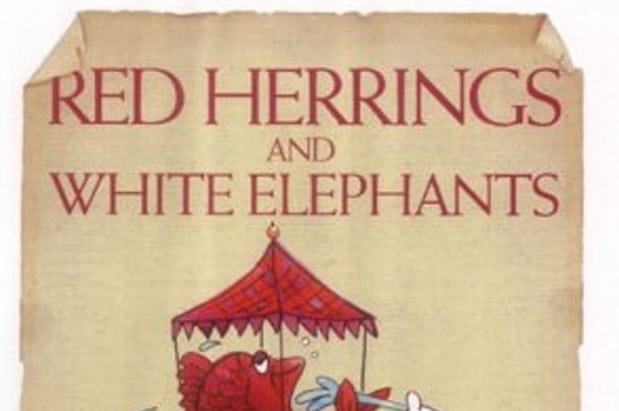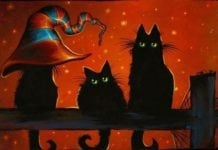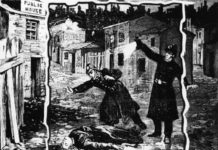When we look out of the window and it is Raining Cats and Dogs, don’t go out there. There are several suggestions for the origin of this phrase, one alluding to a famous occasion when it actually rained frogs.
Apparently many were lifted into the air during a howling gale and then dropped to the ground around startled pedestrians. Cockney rhyming slang then substituted ‘cats and dogs’ for ‘frogs.’
But I don’t believe that. I prefer the ancient nautical myth, which led sailors to believe that cats had some sort of influence over storms.
According to the Vikings dogs were also a symbol of storms and they always appear in illustrations and descriptions of their own Norse god of storms.
Odin, Father of Thor was the god of thunder and is described as an old bearded man with one eye who wore a cloak and wide brimmed hat.
Many claim he was the inspiration for J.R.Tolkien’s character Gandalf in Lord of the Rings.
Because of this connection, ancient mariners believed that when it rained it was the cats who caused it, and when the gales appeared it was brought along by the dogs, leading to the phrase ‘raining cats and dogs.
The phrase first appeared in literature when Jonathan Swift wrote in his 1738 book, ‘A Complete Collection of Polite and Ingenious Conversation’; ‘I know Sir John will go, though he was sure it would rain cats and dogs.’
In 1653 Richard Broome wrote in his play City Wit, ‘It shall rain dogs and polecats’ suggesting he too alluded to the old nautical tales. Frogs indeed!
Red Herring – The phrase is used to describe something that provides a false or misleading clue, often in a detective story.
In the eighteenth and nineteenth century Herring was one of the most widely caught fish in the seas around Britain.
In those pre-refrigerated days Herring would be preserved by heavily salting and smoking the fish to ensure it was still edible by the time they arrived at market across English towns.
This smoking process would turn the Herring a deep brownish red colour. Heavily smoked Herring would also have another notable characteristic, which was particularly strong and pungent smell.
To find out the origins of the well-known phrase we have to turn to hunting in the early 1800’s, or to me more accurate, hunt saboteurs.
It’s true, there must have been an early version of the modern fox lover as on hunt days the strong smelling fish would be dragged along the hunt route and away from the foxes.
This confused the hounds who followed the scent of the Red Herring rather than that of the fox, who would then scurry off to safety.
So effective was this tactic that the phrase passed into common English language meaning ‘to lay a false clue.’
To Read The Riot Act is an expression used when an individual or group of people are given a rollicking about their bad behaviour.
The original Riot Act was passed by the British Government in 1715 as an attempt to increase the powers of the civil authorities when a town was threatened by riotous behaviour.
The act made it a serious crime for groups of twelve or more people not to disperse within one hour of it being read out to the mob. The Act read:
Our Sovereign Lord the King chargeth and commandeth all persons being assembled immediately to disperse themselves, and peaceably to depart to their habitations or to their lawful business, upon the pains contained in the act made in the first year of King George for preventing tumultuous and riotous assemblies. God save the King.
Those failing to disperse risked penal servitude for not less than three years or imprisonment with hard labour for up to two years.
Actually reading it out took extraordinary courage and often, during serious disturbances, many didn’t hear it anyway.
After the Peterloo Massacre near Manchester in 1819 many of the convicted demonstrators claimed not to have heard the act being read and the same defence was put during trials for the 1743 Gin Riots, 1768 St George’s Massacre and the 1780 Gordon Riots. A rowdy bunch weren’t they.
The Act remained on the statute book until it was repealed in the 1970’s, but little use had been made of it for over a century by then, apart from when I come home late from the pub, singing loudly.
The Rule of Thumb is a rough estimate based on experience rather than formal calculation.
The expression has been in wide use since the late 1600’s and there are several suggestions for its origin.
One of them emanates from the ale makers where, in the days before accurate thermometers were available, the brewer would test the temperature of fermenting beers by dipping his thumb in.
I like it, but can find no connection between a brewer and his thumb. If this was the phrase’s origin I would expect to at least find a pub called The Brewers Thumb, but I can’t.
There is a beer called ‘Millers Thumb,’ but that’s not quite enough evidence is it. Another suggestion dates back to the middle ages when it was possible for a man to legally beat his wife with a cane no thicker than his thumb.
Evidence of this comes to light in the ‘Biographical Dictionary of the Judges of England’ written by Edward Foss in 1864.
In the text Foss suggests that a ‘husband may beat his wife, so that the stick with which he administers the castigation is not thicker than his thumb.’
Of course it should have been possible for a wife to beat the man who put that law on the statute book, with a stick no thicker than he was.
Either way, I also don’t believe that to be the origin of our phrase. Instead we again travel back to the Romans who used the tip of the thumb (from the knuckle upward) as a unit of measurement as any thumb would fit roughly twelve times into the next unit of measurement, a foot.
There is definitely a connection as the French word for inches is ‘pouces’ which translates as ‘thumb’ and that remained a standard unit of measurement until we all turned metric.
The Roman bricklayers used their thumbs to estimate measurements and the phrase has been in standard use ever since. – Albert Jack
Albert Jack AUDIOBOOKS available for download here

Shaggy Dogs & Black Sheep







































